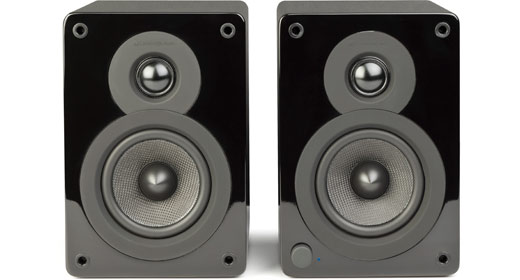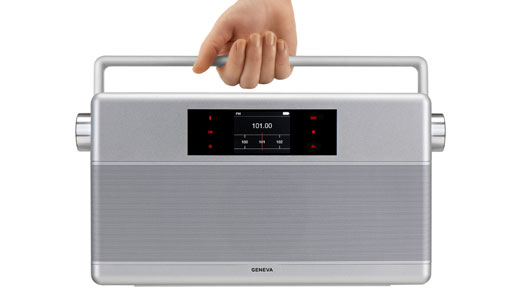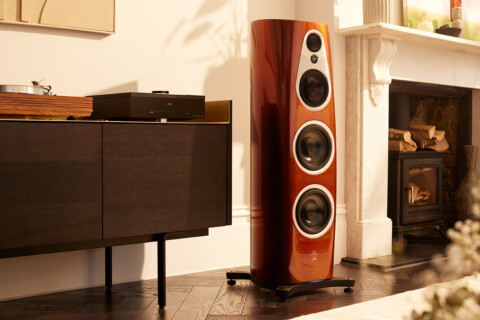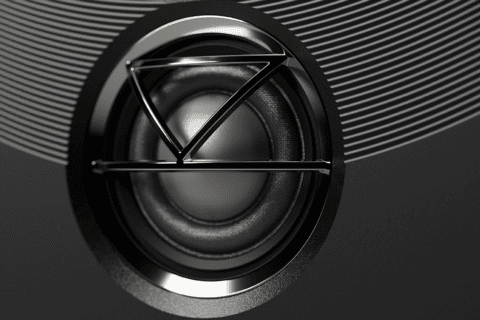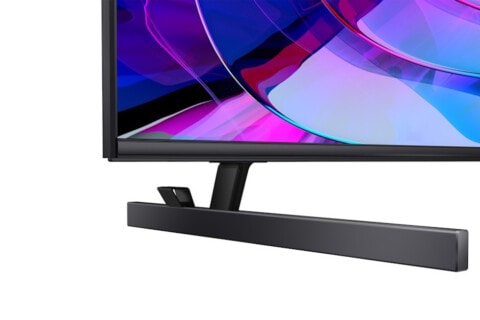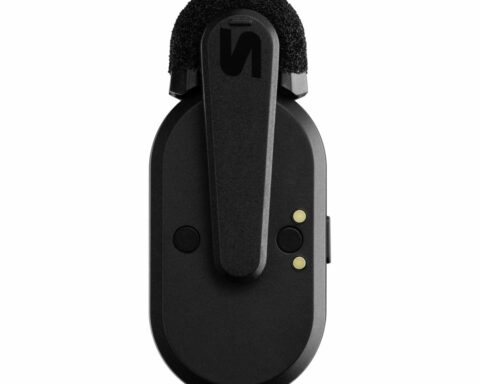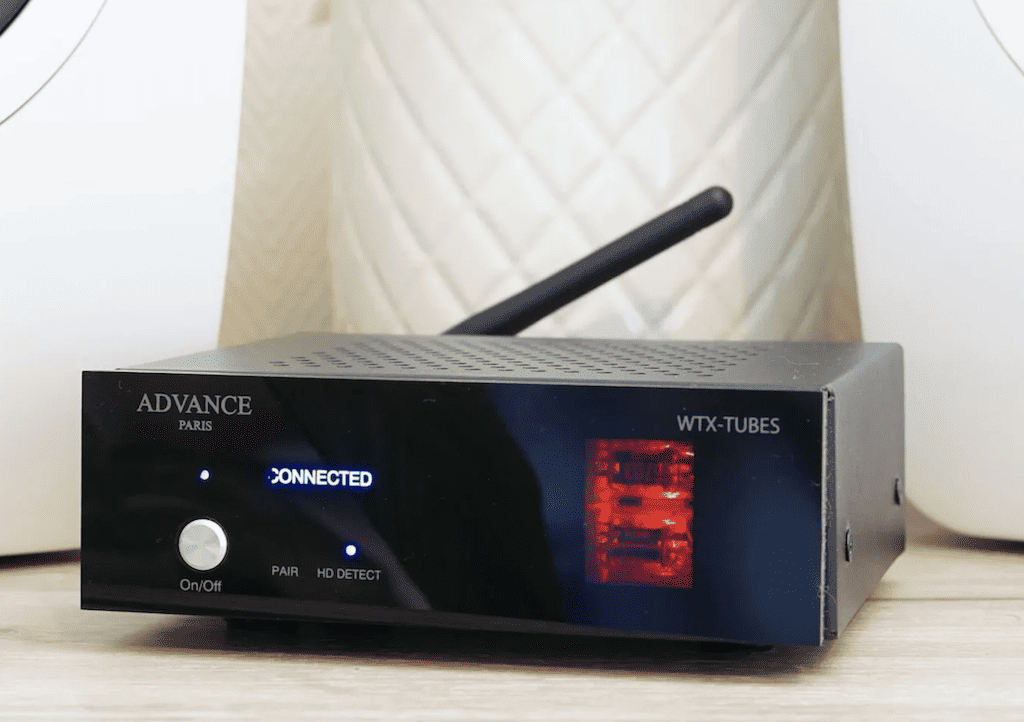$699
5 Stars
Spend most of your time at your desktop? Tired of crappy computer speakers? Desperate for some genuine desktop hi-fidelity? Look no further.
HIGH QUALITY DESKTOP audio comes in two basic shapes. There are those speakers that are elegant and stylish, with cabinets that either make a design statement or are minimalist in nature. The second kind is basically a set of scaled-down standmount speakers. Cambridge Audio’s SLA25 desktop speaker system falls into the second category – the proportions of the cabinets, the layout of the drivers, right down to the removable hi-fi style grilles. They’re even supplied with a set of sponge bungs to damp the output from the rear mounted reflex ports – condensed hi-fi indeed.
Features and Construction
The SLA25’s are very well built units, with a solidly braced MDF cabinet, and they look really good in their gloss black finish – if you like black boxes on your desktop, that is. For some buyers, the form factor and conventional looks are going to be a turn off compared to the smaller, swoopy, laid-back silver metal cabinets of Mission’s Pulse desktop speakers (review coming soon).
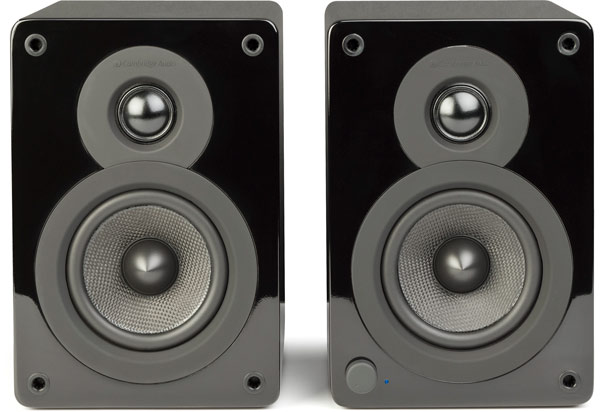 Being a hi-fi nut, I had no hassles with the SLA25’s occupying pride of place at my work desk, and of course, I whipped the grilles off immediately to reveal the 4-inch woven polyfibre mid/bass driver and 1-inch soft dome tweeter. If you’re clumsy or have kids or pets around, then that tweeter is going to take a beating, particularly in a desktop environment, but if you’re careful, then the grilles should come off.
Being a hi-fi nut, I had no hassles with the SLA25’s occupying pride of place at my work desk, and of course, I whipped the grilles off immediately to reveal the 4-inch woven polyfibre mid/bass driver and 1-inch soft dome tweeter. If you’re clumsy or have kids or pets around, then that tweeter is going to take a beating, particularly in a desktop environment, but if you’re careful, then the grilles should come off.
The SLA25’s are powered units, with a 30-watt amplifier housed in the right speaker, along with the inputs and connections, which are all rear mounted; this is no problem as long as you leave the various cables permanently connected. A set of standard speaker cable binding posts is used to hook up the left speaker and a length of cable is supplied for this purpose, but USB or 3.5mm cables are missing in action.
There’s a 3.5mm input, an RCA line-in, an input for CA’s own iPod docks and the all important USB input, which allows users to run their computers directly into the speakers, skipping the computer’s built-in DAC and allowing the (presumably) higher quality DAC in the SLA25’s to convert the digital signal to analogue. There’s also an RCA subwoofer output if you want to add some weight to the overall sound, perhaps with one of CA’s Minx subwoofers, but that’s pretty much superfluous given the on-board bass abilities.
No remote control is supplied, and the only user control is a volume knob that doubles as a standby switch on the right speaker.
Sound Quality
One of the benefits of taking hi-fi style speakers and making them smaller is that you get hi-fi style sound, just reduced in scale. Then again, the fact that you’re located so close to the speakers in a desktop environment mean that they sound just like big speakers.
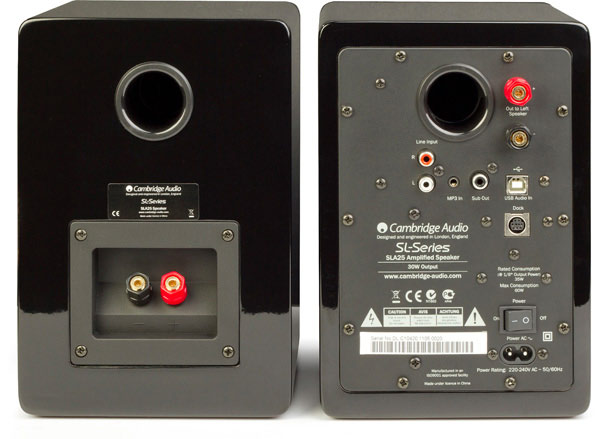 With a claimed frequency range of 60Hz to 22kHz, the SLA25’s go plenty low for desktop speakers, especially with the reinforcement from the desk surface. Siting them right against a back wall brings in way too much of a contribution from the reflex port, and that’s when the aforementioned bungs come in handy. There’s more than enough muscle in the amp, which combines well with the bass on hand to offer a real sense of power and impact. Playing Dave Matthew’s ‘Gravedigger’ from the Some Devil compilation CD (from the drive in my MacBook Pro) and pushing the volume right up showed that the SLA25’s can generate serious sound pressure levels without falling into distortion or compression. Sure, if you push it too far, they’ll harden up but at that point, you’ll probably need earplugs. At more normal volume levels, there’s a sense of delicacy, cohesiveness and high-resolving capabilities to the sound, just as you’d expect from what is effectively a set of mini-monitors in a near-field environment.
With a claimed frequency range of 60Hz to 22kHz, the SLA25’s go plenty low for desktop speakers, especially with the reinforcement from the desk surface. Siting them right against a back wall brings in way too much of a contribution from the reflex port, and that’s when the aforementioned bungs come in handy. There’s more than enough muscle in the amp, which combines well with the bass on hand to offer a real sense of power and impact. Playing Dave Matthew’s ‘Gravedigger’ from the Some Devil compilation CD (from the drive in my MacBook Pro) and pushing the volume right up showed that the SLA25’s can generate serious sound pressure levels without falling into distortion or compression. Sure, if you push it too far, they’ll harden up but at that point, you’ll probably need earplugs. At more normal volume levels, there’s a sense of delicacy, cohesiveness and high-resolving capabilities to the sound, just as you’d expect from what is effectively a set of mini-monitors in a near-field environment.
Their ability to go loud means that the SLA25’s are ideal for other uses besides their obvious desktop/computer speaker orientation – they’d add a lot of gravitas to the sound of a flat panel TV, although an optical input would be a nice touch here to allow easy connectivity and access to the DAC. They’re also ideal as the foundation of a compact hi-fi system in a small room.
Going Hi-Fi
I tried the SLA25’s mounted on a set of stands, fed by my Pro-Ject Dock Box Fi (reviewed here) and was impressed. There was no doubt that I was hearing a true hi-fi level of sound quality – even with the iPod hooked up using basic cables, the SLA25’s were sonically way ahead of most any iPod speaker systems I’ve heard, even the bigger and more expensive ones.
I was intrigued, so I pulled out all the stops and laid out some more serious gear. The SLA25’s were placed on a pair of Monitor Audio stands ($999), hooked up to my Marantz SA8260 SACD player via a set of Nordost Blue Heaven II interconnects ($600) and connected to each other with a single 3m Blue Heaven II speaker cable (half of $1530, I guess). There was also a Blue Heaven II power cable running into the Marantz ($340). With the speakers about 60cm from the rear wall and over two metres apart, slightly toed in, the sound quality was more than just impressive – it was outstanding, considering that the amp and speaker cost is only seven hundred smackers.
The bass was commendably tight and the low-end weight was more than adequate. While there’s definitely an audible contribution from the rear mounted reflex ports, it’s not dramatic, and overall, there isn’t the sense of a big bass boost at the bottom that you might expect from speakers this small – CA’s engineers have tuned these little boxes very nicely indeed. The midrange isn’t recessed; in fact these speakers aren’t at all laid back. Rather, they’re a tad forward sounding, but that makes them an exciting listen. Treble quality was something of a highlight – there’s no brightness or harshness. In absolute terms, there’s a degree of solid-state graininess to be heard, but that’s not an issue. After all, you’re likely to hear the same and more on pricier speaker/amp combinations. Detail levels were also notable, and the sound stage was wide and deep, with imaging that was quite precise – at the price point, they put on a very good show.
Conclusion
I shouldn’t have been surprised that these speakers turned out to be as good as they are because Cambridge Audio has access to a substantial speaker manufacturing concern in the form of Mordaunt-Short. As desktop speakers, the SLA25’s are a treat, and as long as their size and looks work for you, then they’re an excellent choice. As a small-room hi-fi combo, they make for some lovely music, and that’s without any fancy accessories – even with the supplied cable and my cheapest interconnects or a 3.5mm cable, they sounded good. The USB input definitely sounds better than the 3.5mm feed, which makes them a neat choice for a basic computer audio solution. I’d love to see a remote control added to the package to make them user-friendlier in a hi-fi environment, but even as they are, the SAL25’s are a very easy recommendation. ASHLEY KRAMER

